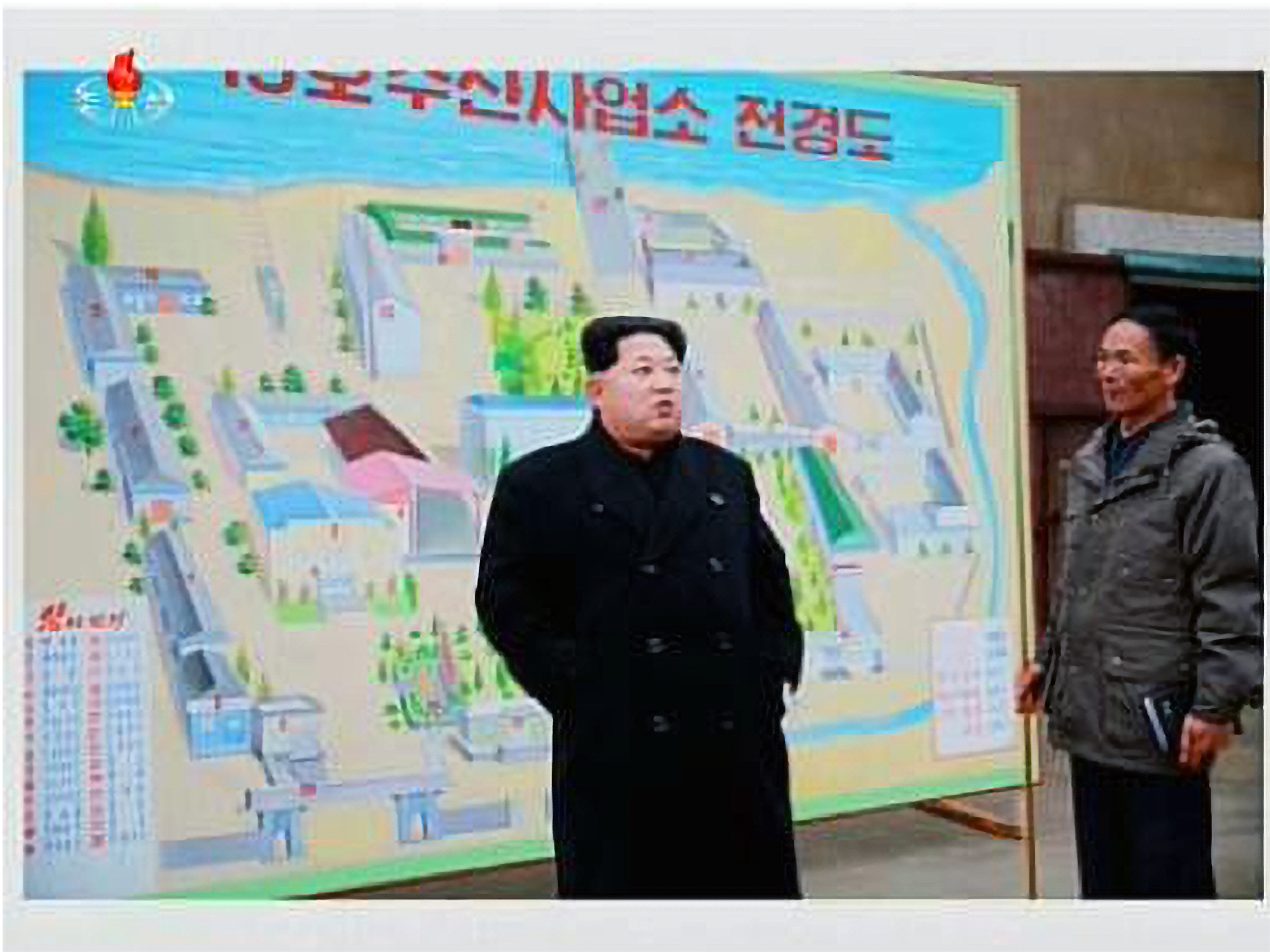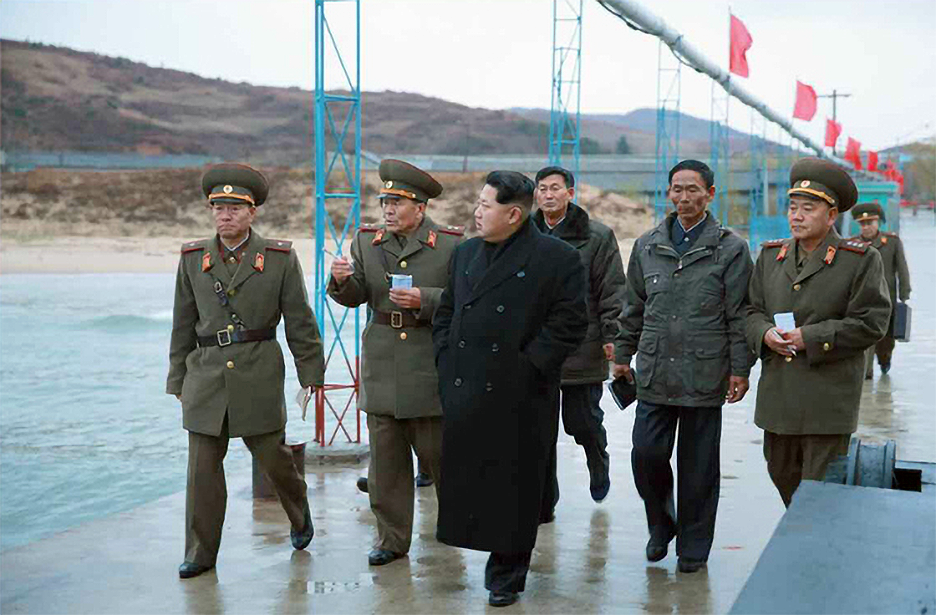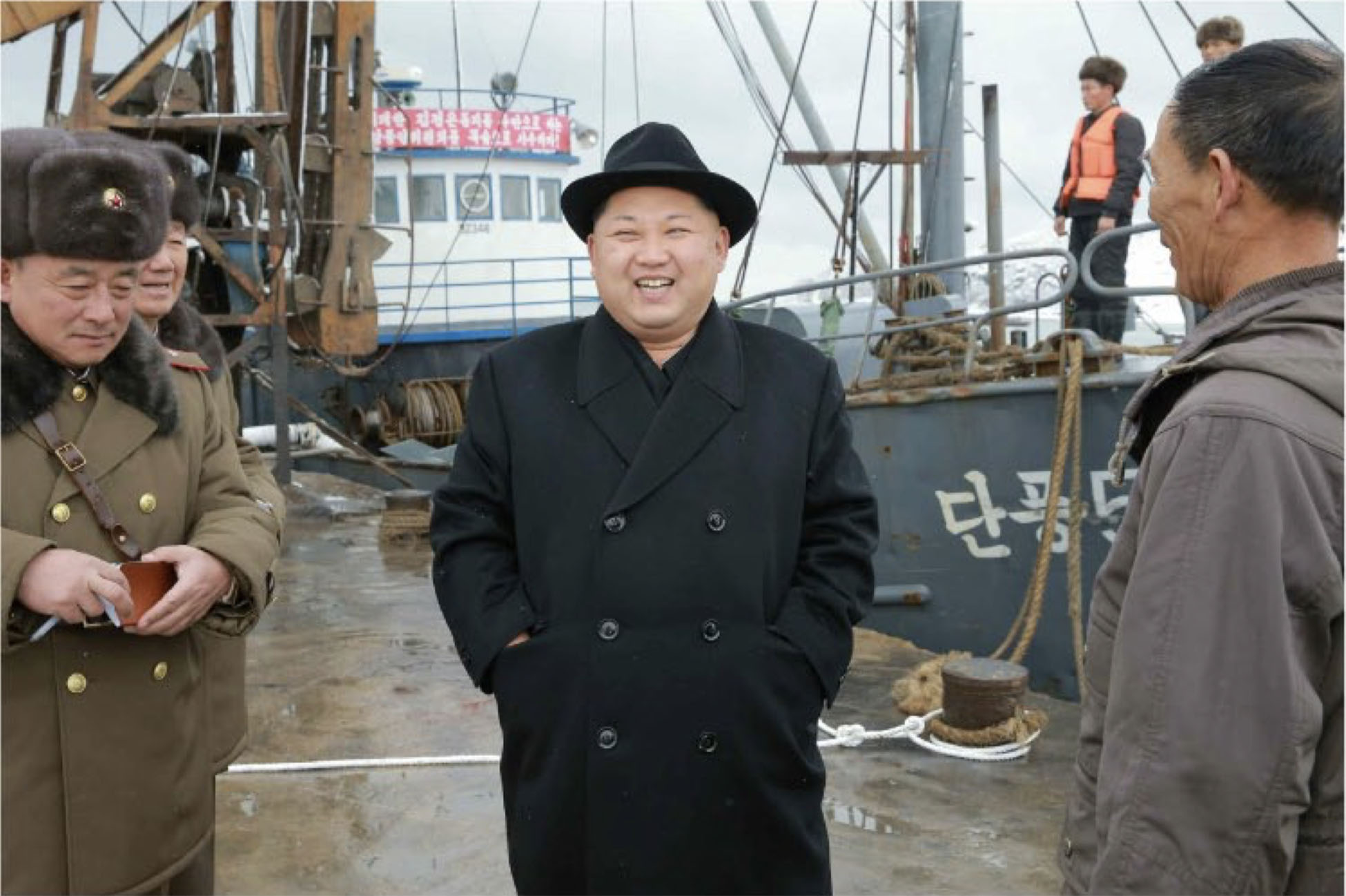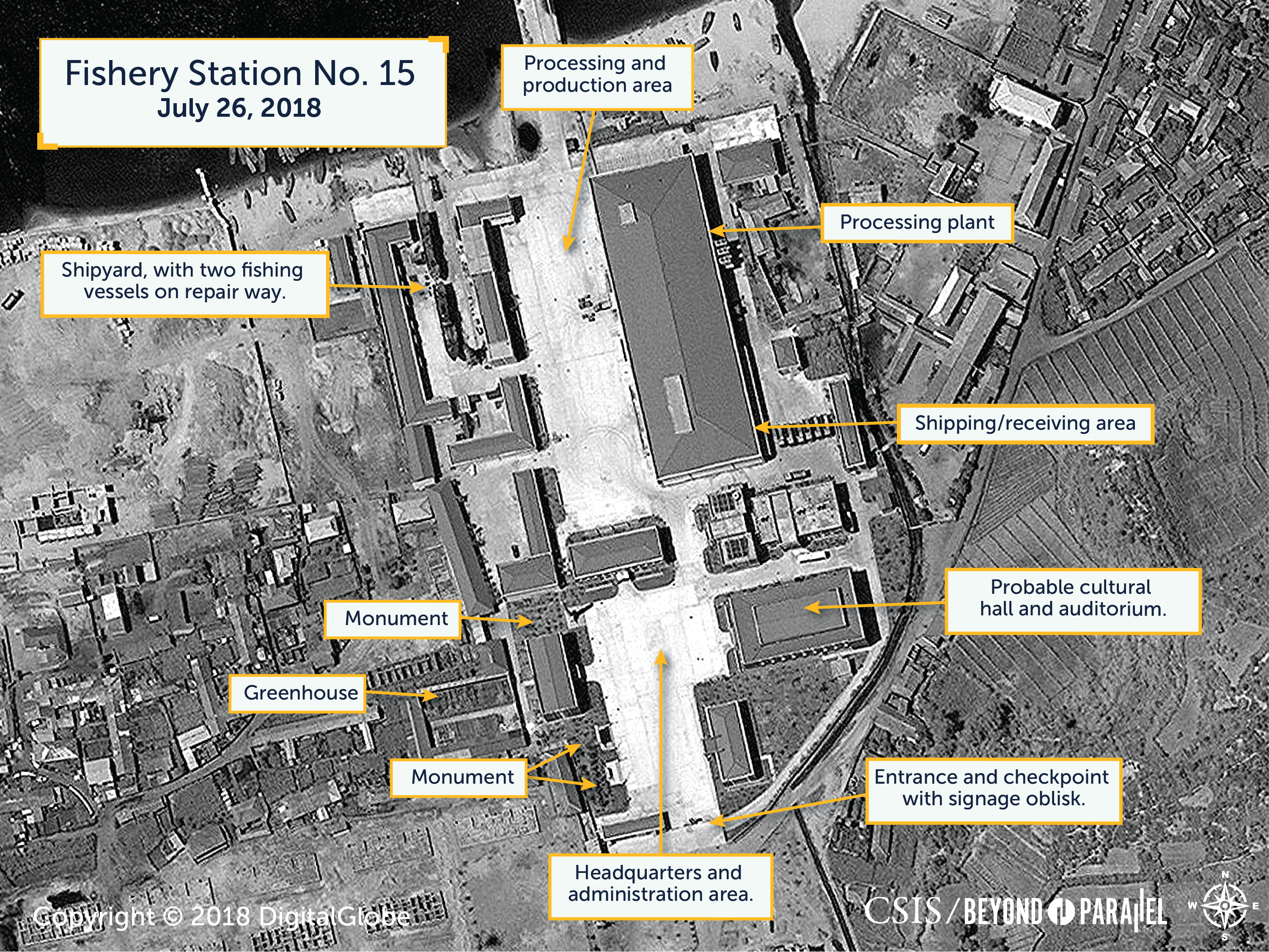
North Korean Strategic Fisheries Development Persists in Spite of Sanctions
Examining the Modernization and Expansion Project at the Korean People’s Army Fishery Station No. 15
Key Points
- The North Korean fishing industry’s critical role in the nation’s economy, particularly its foreign currency earning operations, led to a series of recent international sanctions starting with an August 2017 UN Security Council prohibition of North Korean seafood imports.
- Concurrently, since 2015, a significant modernization and expansion project has been underway at the Korean People’s Army (KPA) Fishery Station No. 15 on North Korea’s east coast. Satellite imagery clearly indicates the development of Fishery Station No. 15, a multi-year modernization and expansion project, is scheduled to continue for the remainder of 2018 and potentially into 2019.
- The activity observed at Fishery Station No. 15 over the past three years probably indicates this project is more than a basic modernization and expansion of a single fishery station. Rather it may be a component of a far-reaching strategic effort to develop North Korea’s fishing industry, an effort recently reinforced by declarations from the summer 2017 Cabinet Plenum.
- Enforcement of international sanctions on North Korean seafood should be expected, therefore, to have an impact on both North Korea’s baseline fisheries earnings and the expected future return on the regime’s investment of resources and strategic effort in this modernization project.
North Korea’s fishing industry occupies a critical role in the nation’s economy and social fabric. Its role in the nation’s economy, particularly its foreign currency earning operations, led to the international prohibition of seafood imports (including fish, crustaceans, mollusks, and other aquatic invertebrates in all forms) from North Korea in UN Security Council Resolution 2371 in August 2017. Socially, while fish represent a primary staple in the diet of both North and South Koreans, for the North it occupies a more critical position having facilitated the population’s survival through the tumultuous economic collapse and famines of the 1990s and more recently through wide swings in agricultural production.
Since the August 2017 UN sanctions, the U.S. added unilateral sanctions of the North Korean fishing industry on September 21, 2017 through 13810 Executive Order. On December 22, 2017, the UN Security Council passed resolution 2397, further clarifying the sanctions also prohibit North Korea from selling or transferring, directly or indirectly, fishing rights. The U.S. then added its own unilateral actions prohibiting the purchase of fishing rights from North Korea on January 3, 2018 with the Countering America’s Adversaries Through Sanctions Act (CAATSA), PL 115-44.
International sanctions come in the midst of a far-reaching strategic effort to develop North Korea’s fishing industry, an effort most recently reinforced in North Korea’s summer 2017 Cabinet Plenum meeting.1 Satellite imagery clearly indicates the development of Fishery Station No. 15, a multi-year modernization and expansion project, which is scheduled to continue for the remainder of 2018 and potentially into 2019. The activity observed at Fishery Station No. 15 over the past three years probably indicates this project is more than a basic modernization and expansion of a single fishery station. Rather, it may be a component of a far-reaching strategic effort to develop North Korea’s fishing industry. Enforcement of international sanctions on North Korean seafood should be expected, therefore, to have an impact on both North Korea’s baseline fisheries earnings and the expected future return on the regime’s investment of resources and strategic effort in this modernization project.
Satellite imagery between September 2016 and July 2018 shows the completion of phase one and significant progress on phase 2 of a multi-year modernization and expansion project at Fishery Station No. 15. The imagery also clearly indicates the development of Fishery Station No. 15 is scheduled to continue for the remainder of 2018 and potentially into 2019.
Overview of North Korean Fishery Operations
Fishery operations in North Korea are administered under two parallel but separate organizational structures by the Ministry of Fisheries and certain units of the KPA. The KPA operates a series of fishery stations that reportedly provide fish for the KPA, residents in the capital city of Pyongyang and, more significantly, for international sale and foreign currency earning operations. Fishery Station No. 15 under KPA Unit 549 is one of several fishery stations run by the KPA. Other frequently mentioned KPA fishery stations mentioned in the North Korean media during the past five years include: 2
- Fishery Station No. 18 (Wonsan-si), under KPA Unit No. 5673;3
- Raksan Offshore Salmon Fish Farm, under KPA No. Unit 810;
- August 25 Fishery Station (Tongchon-up), under KPA Unit No. 313;
- January 8 Fishery Station, under KPA Unit No. 534; and
- May 27 Fishery Station, under KPA No. Unit 534.
Ministry of Fisheries’ control extends down through Provincial Fishery Management Bureaus to large fishery stations (i.e., Nampho {Nampo} Fishery Station, Kimchaek Fishery Station, etc.), Distant-Sea Fishery Complexes and small local fishing concerns (i.e., small-scale fishing stations) along both coasts and inland lakes and rivers. 4 The Ministry of Fisheries also operates a number of national level bureaus (e.g., Fish Farming Management, etc.), laboratories, and institutes (e.g., Institute of Fishery, etc.) to support the industry. 5 It apparently also operates, or oversees operations at, an unknown number of fishing boat construction and repair facilities (some of which are associated with provincial fishing stations). 6
The KPA has always operated a second economy in parallel with the domestic economy. Reforms that started with events of the 1990s have continued to evolve since Kim Jong-un assumed power and the KPA has devoted a greater effort than it had historically to food production and foreign currency earning.
Kim Jong-un has also taken a more proactive role in both praising and criticizing economic projects. The level of praise Kim has specifically granted to the KPA’s fisheries has been notable and evidenced by the number of visits and on-the-spot guidance trips taken by Kim and other high-level KPA and Workers’ Party of Korea (WPK) officials reported by state media. 7 Annual worker ceremonies also celebrate the achievements of the so-called activists in fisheries under the KPA. These annual events appear to have reached new heights in 2013 and were reported in 2014, 8 2015, 9 and 2016 10 to applaud fulfillment of fishery production goals.

Modernization and Expansion of Fishery Station No. 15: Phase I
On November 24, 2015, two days after a trip to the August 25 Fishery Station under KPA Unit 313, Kim Jung-un undertook a field guidance trip to Fishery Station No. 15 under KPA Unit 549. 11 It is interesting to note that, concurrent with the modernization and expansion of Fishery Station No. 15, a project building a large-scale fishing village zone in the areas of Koam, Tapchon and Chonapho was also initiated under the orders of Kim Jung-un. This project would witness the displacement of the Tapchon-ni Hovercraft base. 12

On his visit to Fishery Station No. 15, Kim Jong-un congratulated the officials and employees of the station for making a big haul to satisfy the Supreme Commander’s desire to supply fishes to the service persons every day and supplying fresh fishes to the soldiers in all seasons. Kim’s visit to the station was, reportedly, not only to congratulate it on its achievements but also to provide a fresh turning point in the work of the station. This fresh turning point initiated a sweeping multi-year modernization and expansion program. Among the areas to be addressed under this program were: construction of a new breakwater and wharf; introduction of new fishing and processing technology onshore and on the station’s fishing vessels; expansion of the flash-freezing and refrigerating facilities; expansion of mechanization in unloading, sorting, freezing, and storage operations; improved maintenance and repair of fishing vessels; modernization of all production buildings; and improved housing and leisure facilities for members and their families. While outside technical assistance would be forthcoming, much of the physical labor would be undertaken by the officials and employees of the station with assistance from Unit No. 549. The ultimate goals of these projects were to enable it to catch, process, and deliver a greater tonnage of processed fish in fulfillment of newly established goals.
Satellite imagery indicates that the modernization program began quickly shortly after Kim’s visit. By March 23, 2016, many of the station’s existing buildings had been razed and excavations for the foundations for the new processing plant and other buildings were being excavated. Work had also begun on expanding and modernizing the main wharf.
By August 17, 2016, the station had expanded to encompass approximately 14 hectares due to the arrival of hundreds of concrete caissons, blocks, and tetrapods for expansion and construction of wharfs, and a seawall. The new processing plant, shipyard with repair shops and storerooms, 13 and approximately nine other buildings were externally completed. Several monuments had also been erected. However, several other buildings were still under construction and the stations roads and parking areas had yet to be graded and paved. Approximately 34 buildings were completed or under construction and numerous construction vehicles were present throughout the station. Large fishing vessels were present along the northeast pier, main wharf and on the repair way. At the end of the following month, several additional buildings were externally complete, and work was slowly proceeding on the main wharf. On February 26, 2016, a total of 12 large fishing vessels were present along the northeast pier, main wharf and outside the repair way. This has been the largest number observed at any one time at the station and was likely related to the impending start of the years first 70-day campaign to greet the historic Seventh Congress of the Workers’ Party of Korea with unprecedented labor achievements.14
Modernization and Expansion of Fishery Station No. 15: Phase II
On December 14, 2016, a year after his first visit, Kim Jong-un returned to the Fishery Station No. 15 for a second on-the-spot-guidance inspection both to congratulate the unit on “fulfilling the annual fishing plan 170 percent” and to assess progress with the modernization program. 15 During his visit, Kim inspected the station’s production facilities and fishing vessels, was briefed on the modernization and expansion program’s progress, and emphasized the importance of transforming the station by the “informatization and the scientization (sic) of production and business activities” to bring it into the “era of (a) knowledge-based economy.” 16 Once again, he set annual fish production goals for the station and called for new employee housing to be built in the next year.17

Satellite imagery from March 28, 2017, shows that steady progress had been made on the main station facilities. There were now approximately 29 buildings, construction of a new greenhouse had begun, the roads and parking areas had been graded and paved, the main wharf had been expanded to 240-meters-long, and nine large fishing vessels were present. By November 4, 2017, the infrastructure of the main facility (including the new greenhouse) was complete, the main wharf had been extended to its final length of 325-meters, a new 60-meter-long jetty had been built to the west of the station, and construction of a long seawall had started. At the northeast pier, an 18-meter-long concrete and earth ramp was built out over the old framework. No large fishing vessels were present.
The following year would witness continuing development and expansion of Fishery Station No. 15. By January 20, 2018, work had progressed to lengthen the jetty to approximately 75-meters-long, seawall construction continued slowly, and the concrete and earth ramp at the northeast pier had been extended to 40-meters-long. Ten large fishing vessels were present.
Five months later, on June 6, 2018, dramatic changes had occurred. With work on the main station infrastructure completed, construction moved into a second phase focused on adding new infrastructure and housing. A new wharf was under construction 200 meters west of the station and was now 125-meters-long and work continued on a seawall, that will eventually be at least 300-meters-long. Immediately behind the new wharf and seawall, a large area had been cleared and graded, and construction of several new buildings begun. Five large fishing vessels were present. Within the village of Namsong-ni, all the dwellings with a large 5.5-hectare area immediately south of the station had been razed and 29 new housing units (potentially apartment buildings) were under construction. If the development of Fishery Station No. 15 continues, it is likely that the housing area will also expand.
As of July 26, 2018, Fishery Station No. 15 had expanded to encompass approximately 22.5-hectares, construction had continued on both the new wharf, which was now 175-meters-long, and the seawall. The jetty that had been erected during 2017 was removed, the seawall has been widened and extended, and the area immediately behind has continued to be developed. Work continues on the new wharf, which will likely continue to be extended to create a protected boat basin. Six large fishing vessels are present (two of which are on the repair way). Within the village of Namsong-ni, construction on the new housing units slowly continued and most foundations and first-floor walls have been completed. Satellite imagery clearly indicates that the development of Fishery Station No. 15 is scheduled to continue for the remainder of 2018 and potentially into 2019.
Looking Ahead
The degree to which international sanctions on North Korean seafood and sale of fishing rights are enforced will largely determine the impact such a regime can be expected to have on North Korea’s fishing industry. Should news reports of relaxed sanctions enforcement or of an uptick of fish transfers at sea increase, the North Korean fishing industry, including KPA’s Fishing Station No. 15, will see a reduced impact on their foreign currency earning capabilities.
Looking ahead for the status of the ongoing modernization and expansion projects, any one of, or any combination thereof, the following would indicate a strategic decision to further develop the fishery station:
- Completion of the sea wall and construction of additional piers or wharfs.
- Expansion of the open area behind the sea wall and the construction of Fishery Station No. 15’s new processing facilities.
- Construction of additional housing units in the village of Naming-ni.
- Presence of additional large fishing vessels or the construction of such vessels at Fishery Station No. 15.
- Moderization and construction at other fishing sites.
This would likely be a continuation, or expansion, of the existing national level fishery expansion plan that was instituted several years ago by Kim Jong-un.
References
- Ri Chol-su. An Expanded Meeting of the Cabinet Plenum Was Held, Minju Joson, July 21, 2017; and “Kim Jong Un Inspects Completed Koam-Tapchon Railways,” KCNA, May 24, 2018. ↩
- Identified through reviewing North Korean state media (via KCNAWatch) and Wikimapia. ↩
- The KPA often uses military unit cover designations (MUCDs) when publicly mentioning its military units. Unit No. 549 is such a cover designation. There is some ambiguity in open-source information concerning the precise size and designation of KPA Unit 549. Reports dating from as far back as 1998 occasionally describe it as KPA Combined Unit No. 549, suggesting that it may be the corps headquarters responsible for the defense of Kangwon Province on the southeast coast. Other sources identify the corps defending Kangwon Province as the I Corps. For example, Military and Security Developments Involving the Democratic Peoples Republic of Korea (Washington, D.C.: Department of Defense, 2013), 11; Supreme Commander Kim Jong-il Inspects KPA Combined Unit, KCNA, August 4, 1998; and Bermudez Jr., Joseph S. Shield of the Great Leader: The Armed Forces of North Korea (London: I.B. Taurus, 2001), 14-16. ↩
- Winter Fishing Brisk in DPRK, KCNA, November 14, 2017; 2016 Socialist Emulation in Fishery Reviewed, KCNA, March 7, 2017; 70th Anniversary of Nampho Fishery Station Marked, KCNA, April 19, 2017; Fishery Station Number 15, KCTV, December 31, 2015; Yonchin Fishery Station, KCBS, November 29, 2015; and DPRK Develops, Uses Natural Energy to Resolve Electricity Shortage Problem, Choson Sinbo, November 25, 2015. ↩
- Sustainable Development of Fishing Industry Encouraged, KCNA, June 21, 2018; and 70th Anniversary of Nampho Fishery Station Marked, KCNA, April 19, 2017. ↩
- Fishing Boats Built in DPRK, KCNA, October 16, 2017. ↩
- Winstanley-Chesters, Robert. Politics and Pollack: It Takes a Nation of Fishes, Sino-NK, July 24, 2014, https://sinonk.com/2014/07/24/politics-and-pollack-it-takes-a-nation-of-fishes/ ↩
- Supreme leader awards decorations to exemplary officials, Pyongyang Times, December 30, 2014, https://kcnawatch.co/newstream/1450714951-990566334/supreme-leader-awards-decorations-to-exemplary-officials/. ↩
- Participants in 3rd Meeting of Activists in Fisheries under KPA Feted, Rodong Sinmun, December 31, 2015. https://kcnawatch.co/newstream/1451592015-34767500/participants-in-3rd-meeting-of-activists-in-fisheries-under-kpa-feted/ ↩
- 4th Meeting of Activists in Fisheries under KPA Held, Rodong Sinmun, December 31, 2016. https://kcnawatch.co/newstream/1530452069-867775131/4th-meeting-of-activists-in-fisheries-under-kpa-held/ ↩
- Kim Jong Un Visits Fishery Station No. 15 of KPA, KCNA, November 24, 2015; and North Korea Newsletter, No.390, Yonhap, November 26, 2015. ↩
- See also Kim Jong Un Inspects Completed Koam-Tapchon Railways, Rodong Sinmun, May 25, 2018; and Koam-Tapchon Marine Railway Bridge Completed, Rodong Sinmun, June 1, 2018. ↩
- Fishing nets and fishing-related supplies and equipment are likely received from the Wonsan Fishing Tackle Factory and Songchongang Net Weaving Factory. “Kim Jong Un Provides Field Guidance to Songchongang Net-Weaving Factory and Plastic Tube Shop,” KFAUSA, July 18, 2014, https://www.kfausa.org/kim-jong-un-provides-field-guidance-songchongang-net-weaving-factory-plastic-tube-shop/; In Kim Jong Un’s Summer Palace, Fun Meets Guns, Bangkok Post, October 10, 2017; and Wonsan Zone Development Corporation. Project Proposal – New Establishment of Wonsan Fishing Tackle Factory, http://www.naenara.com.kp/en/trade/download.php?wonsan+22 ↩
- First Fishing Campaign Begins in West Sea of Korea, KCNA, February 25, 2016. ↩
- Respected and Beloved Comrade Kim Jong Un Gives On-the-Spot Guidance at Korean Peoples Army Fishery Station No. 15, Rodong Sinmun, December 15, 2016. ↩
- Respected and Beloved Comrade Kim Jong Un Gives On-the-Spot Guidance at Korean Peoples Army Fishery Station No. 15, Rodong Sinmun, December 15, 2016. ↩
- North Korean Daily: Kim Jong Un Inspects Fishery Station of Korean People’s Army, Rodong Sinmun, December 15, 2016. ↩







